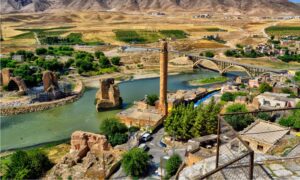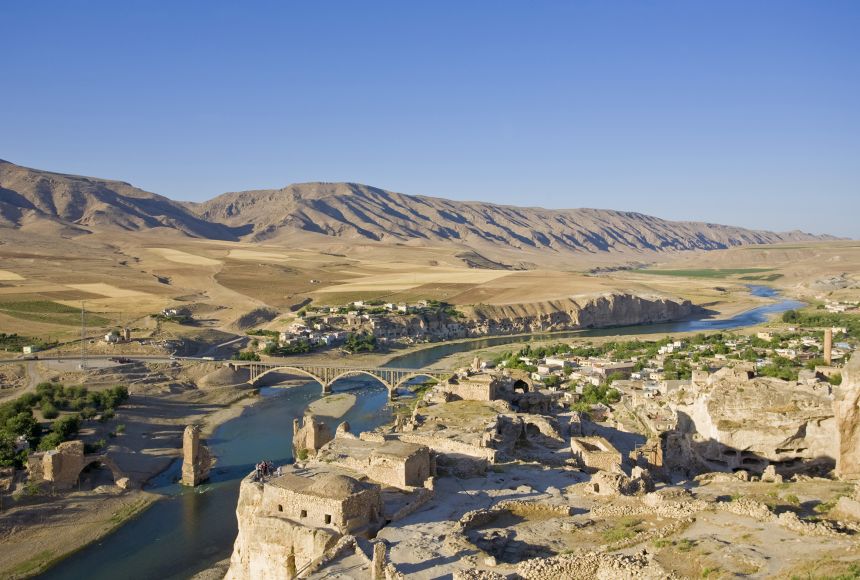Getting to the source of the Tigris isn’t a stroll in the park. It’s like a puzzle to solve – where a dirt road ends, a tiny path snakes up a rugged mountain. The path gets thinner and riskier, winding around the hillside until it’s stopped by a rush of springs. They merge into a stream that vanishes into a huge cave. When the river finally pops out 1.5km later, it’s all calm and collected.
Ancient Secrets and the Birth of Civilization
The Assyrians thought this spot was where worlds collided, way back 3,000 years ago. They’d even send their armies here to make offerings. A statue of Tiglath-Pileser, an Assyrian king, still stands at the tunnel’s entrance, weathered by time but proud as ever, gazing over his empire.
The Tigris starts in Turkey, flows through Syria, and hits cities like Mosul and Baghdad in Iraq. This land, between the Tigris and its sister river Euphrates, became a hotspot around 8,000 years ago. Our early ancestors settled here, started farming, and built cities like Eridu and Uruk. This area became the “Cradle of Civilization” and gave birth to inventions like the wheel, writing, laws, and even beer brewing.

Forgotten Heritage Amid Conflict
But now, due to Iraq’s ongoing troubles, it’s easy to forget how the Tigris shaped our shared past.
In 2021, a small crew and I took on a mission – to trace the Tigris’ story from its source to where it hits the Persian Gulf. No one’s done this for ages! The plan was to hear from the people living by the river and dig into the issues threatening its future. There’s talk that this once mighty river is fading, thanks to political instability, bad water management, and climate change.
The Incredible Journey
We journeyed about 2,000km by boat and land, starting from the Tigris’ source in Turkey. We found ancient castles and fortresses along the riverbanks, telling tales of empires that once ruled these lands. Diyarbakır in Turkey is now a hub for Kurds, and there we met Feleknaz Aslan, a Kurdish singer. She sang of a tragic love story set by the Tigris, a theme that echoed through Kurdish songs over time.
Further down, in the Taurus mountains, we visited Mor Evgin, a 4th-Century monastery. Inside, ancient Christian prayers were still etched on the walls, reminding us how this land fueled the rise of Judaism, Christianity, and Islam.
Battling Against Odds
Navigating the Tigris wasn’t a cakewalk. Dams in Turkey made it tough, and Syria turned it into a border. It was only in Mosul that we found smoother sailing.
The Tigris led us to ancient Assyrian capitals like Ashur and Nimrud, damaged by ISIS. But local heroes were working hard to protect these historical sites.
Echoes of Humanity and Hope
Despite all the turmoil, the people along the Tigris welcomed us with open arms. In Kifrij, we heard about shepherds risking everything to save people from ISIS territory. It’s these stories, bound together by the Tigris, that highlight the river’s role – a divider between life and death but also a symbol of kindness.
We met the Mandaeans, a small but ancient religious group, performing baptisms in the Tigris. The river, a lifeline for their beliefs, still holds a special place in their hearts.
The Tigris, with its stories of history, tragedy, and humanity, remains a testament to what we’ve built and what we stand to lose if we ignore its plight.


